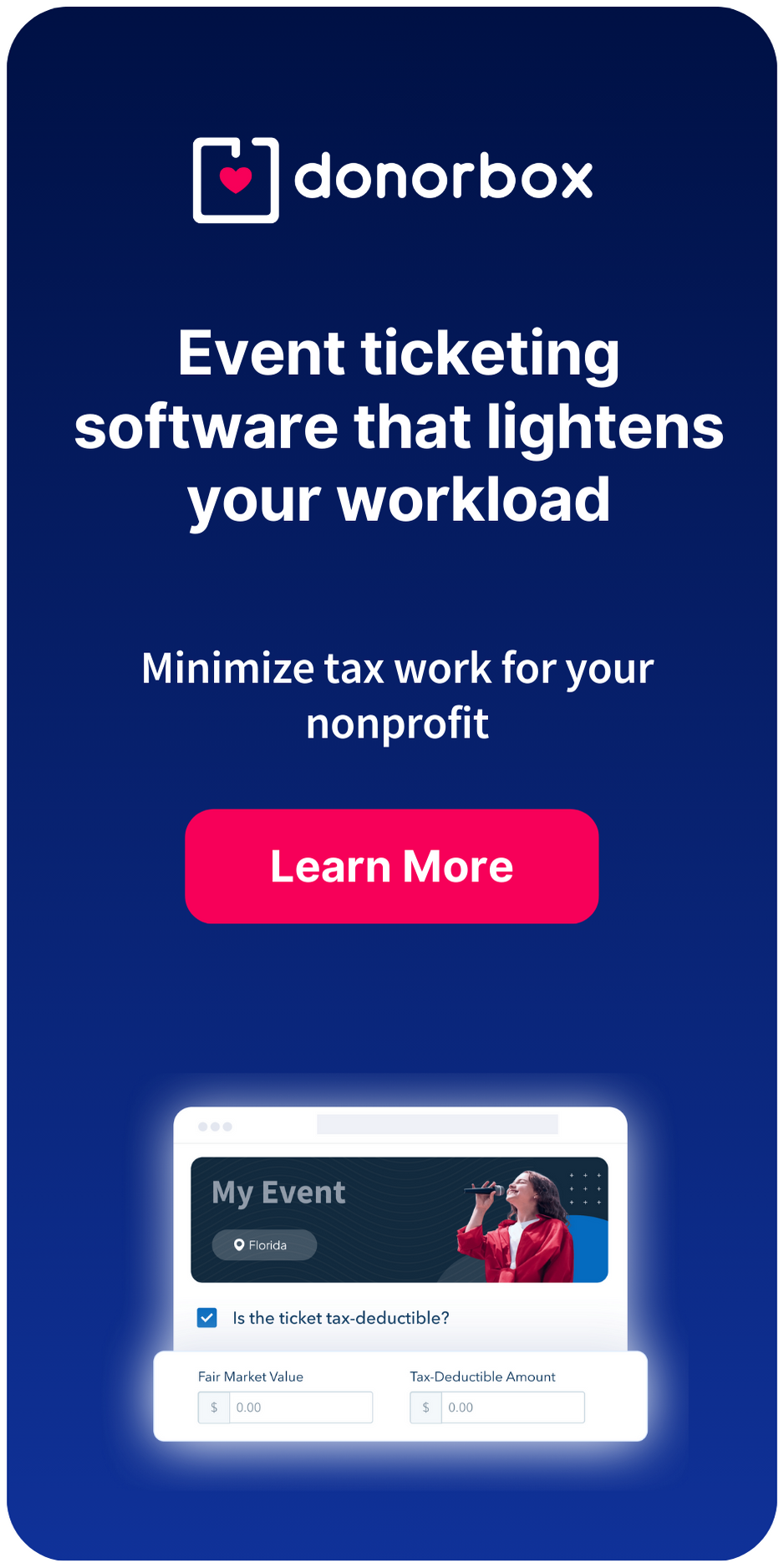You’ve planned your next fundraising event and worked out how much it’ll cost to run it.
The next step is to find sponsors to help cover the costs.
If you haven’t searched for fundraising event sponsors before, it can be difficult to know the best way to do it. Where do you find businesses that will be interested in jumping on board? And how do you encourage them over the line?
In this guide, we discuss how to find the right sponsors for your fundraising event and give tips on how to make contact with potential sponsors (and how not to go about it!).
Why Companies Sponsor Fundraising Events
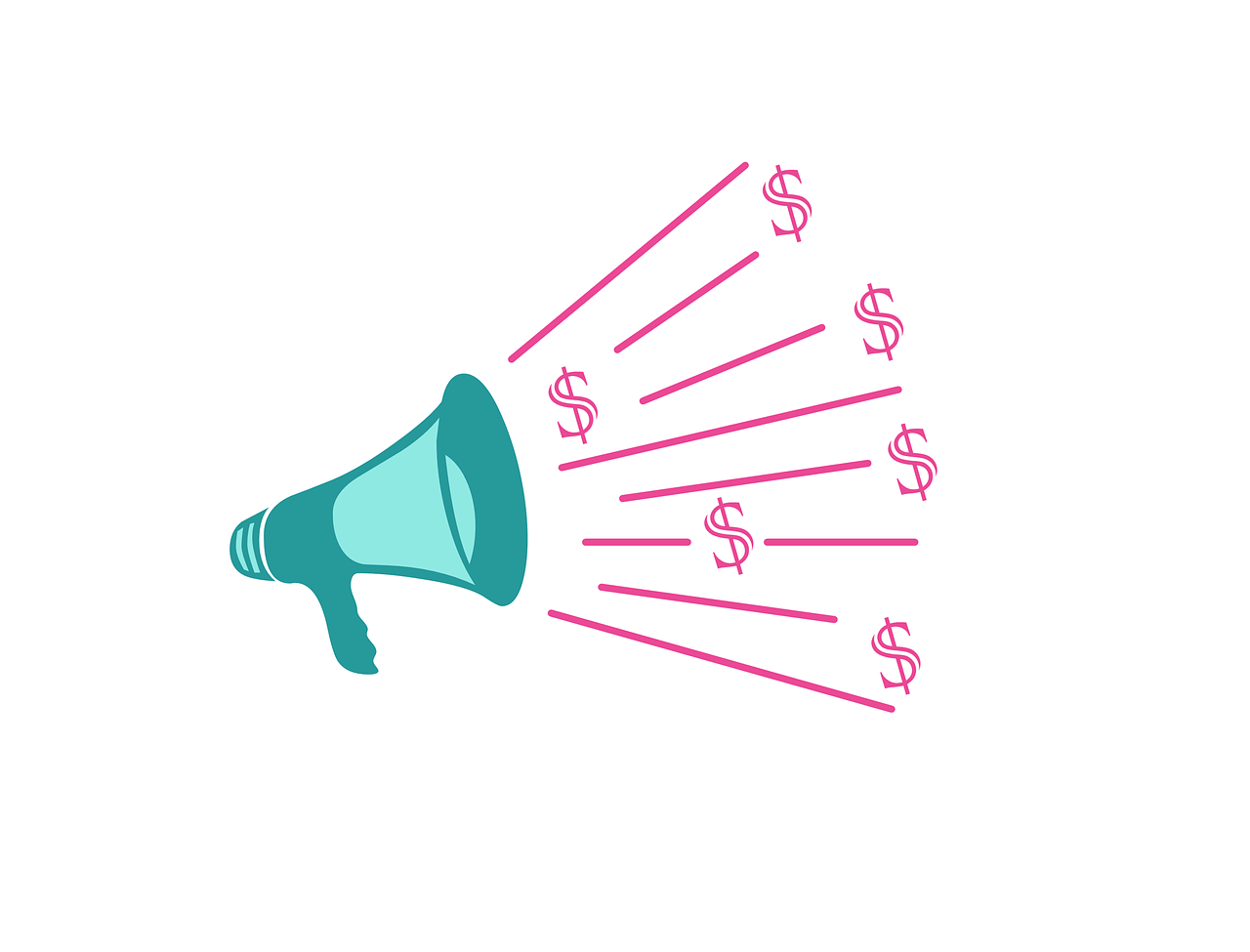 Sponsorship involves making payments or offering in-kind support to your organization — usually in exchange for low-cost promotion for the company. Their name and branding is in front of attendees.
Sponsorship involves making payments or offering in-kind support to your organization — usually in exchange for low-cost promotion for the company. Their name and branding is in front of attendees.
Many companies want to give back to the local community and there can be tax benefits for them too. They’ll also receive publicity and goodwill for helping to make the event happen.
A Step-By-Step Guide to Securing Sponsors For Fundraising Events
Now you know why companies can be keen to become event sponsors, we’ll walk you through how to choose the right ones.
1. Define Your Target Sponsorships
Which businesses will you target as sponsors? Working out which ones will be a good fit can help avoid overstretching your resources.
Pro tip #1: Starting this process 3-4 months before your fundraising event gives you plenty of time to secure sponsors. Early planning can be significant if it’s likely that other organizations will be seeking sponsorship at the same time. You can strike early and have less competition when pitching businesses.
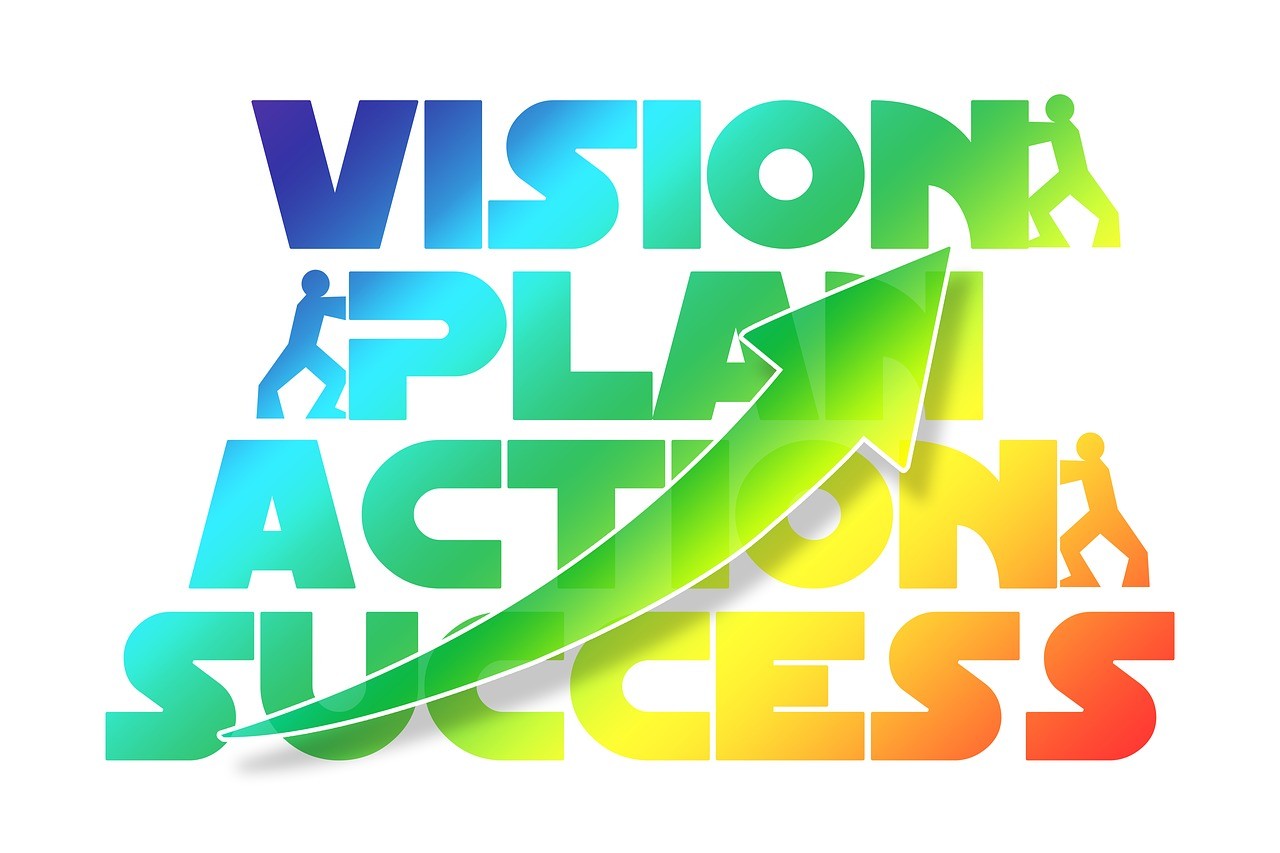
Start off by thinking about your event attendees. What types of businesses will be interested in getting themselves in front of them? Put together a list of potential sponsors.
Local businesses can be another good starting point. They’re often keen to get involved in the community — assuming they have the budget to do so, of course!
When you’re compiling your list of target sponsors, don’t limit yourself to ones that may have the budget for sponsorships.
In-kind donations can help reduce the costs of running your fundraising event, and many local businesses will be happy to do this. Even if they don’t have the budget to purchase a sponsorship package, they can still support your event in a different way.
You can also look at the types of businesses that are already sponsoring similar fundraising events. You don’t necessarily want to go after the exact same businesses — they’ll likely renew these sponsorships. It gives you a better idea of the types of businesses you can target though.
Pro tip #2: Reaching out to companies who have a crossover with your mission can lead to better conversion rates. For example, an animal rescue nonprofit can look to secure sponsorship from pet-related brands and nonprofits fighting hunger can target food brands.
2. Work Out Your Sponsorship Details
Create sponsorship packages to fit different budgets — cater to small, mid-sized and larger businesses within these. Each sponsorship package can have different perks. This can range from logo placements to signage at the event, for example.
You can also have a top-tier sponsorship package that is reserved for one or two businesses. The latter can have perks such as discounted tickets or VIP tickets for their employees in exchange for the higher sponsorship.

Use your event goals to determine your sponsorship tiers. If you need to raise $10,000 through your fundraising event, aim to secure at least half of this in sponsorship. Your top tier package could then be set at $1,500 – $2,000, for example, and feeds down from there.
You might set your sponsorship tiers at:
- $250 for basic sponsorship (aimed at smaller companies) and name mentions on your nonprofit website
- $500 for medium sponsorship (aimed at mid-sized companies) to also include company inclusion in press releases and logo placements on signage and marketing materials
- $1,000 to $1,500 for higher-level sponsorship (aimed at larger companies) to also include reserved seating at the event and company names on the tables
- $1,500 to $2,000 for a VIP sponsorship package (for just one company) to also include acknowledgment of the company by event speakers and VIP tickets

Once you’ve finalized your sponsorship packages, put together one-page documents on the event and sponsorship options. Highlight the impact of sponsorship on your mission. This can be useful when you’re meeting with businesses to discuss sponsorship options.
Create a sponsorship form for businesses to sign when they agree to become an event sponsor.
3. Start Your Outreach
Once you’ve laid the groundwork, it’s time to start doing some outreach.
Work through your list of target sponsors. If your staff, volunteers or board members have any connections at any of these companies, use this “in” to your advantage. You’re more likely to get a response to your outreach efforts, which you can build on.
At this stage in your outreach, try to avoid bombarding your target sponsors with too much information. To begin with, the aim is to start conversations and set up meetings.
Here’s an example of how to structure a sponsorship letter:
Date
Your Name
Your Organization’s Name
Street
City, State ZIP
Dear [Name of your main contact],
[Start off with a brief description of your organization and offer some details of your background including your mission and vision, and the work you carry out towards this].
We’ll be hosting our [event name] on [date] at [location]. [Give a brief overview of the event and why you’re holding it].
[If it’s not the first time you’ve held this type of event, talk about the success of previous events and your excitement at repeating it. Include details on what you’ve raised in the past and stats/achievements you’d like to note; past and present sponsors].
We’re aiming to raise [amount], and we’d be thrilled and grateful if you could help us reach it.
By coming on board as one of our event sponsors, you’ll be able to help [details of what you’ll be able to achieve through sponsorship].
The enclosed [name of sponsorship sheet document] details some of the additional benefits of becoming one of our corporate sponsors. It also details the sponsorship packages that are available to event sponsors.
Regardless of the sponsorship package you choose, your company name will [details of any basic perks that all sponsors will receive].
If your company is more comfortable providing in-kind donations of goods or services, we’re open to receiving these too.
I’d love to talk more about how we partner together to help [reiterate your goal for the funds raised] through event sponsorship.
Please don’t hesitate to contact me directly at [phone number] or [email] if you have any questions or want to set up a time to chat.
Thank you for reading
[Sign off] Sincerely etc.,
[Your printed name]
[Your title]
[Your signature]
You’ll likely get plenty of silence — in the early days of your outreach, at least. Don’t let this put you off following up on your initial communication. Silence doesn’t always mean “no”. Emails can easily slip through the cracks when people are busy!
You may need to follow up a few times before you receive a response, whether this is of the positive or negative variety.
Pro tip #1: Sending emails on Tuesdays to Thursdays can be more effective. Try to avoid Mondays and Fridays as much as you can — people are still catching up from the weekend or counting down to it so they’re often less inclined to respond to emails.
Taking an integrated approach to your outreach can be effective. Combining cold calling, social media and emails can help get a response to your outreach.
Cold calling can be daunting but it’s a great way to make sure that you’re sending your communications to the most appropriate person. If you can speak to a decision maker, it’s often easier to gauge the level of interest too.

Connecting with decision makers on social media can also help “warm up” target sponsors before you start your outreach. Some organizations have also had success in using social media for outreach — Facebook, Twitter, and LinkedIn can all work well for this.
Experiment with your options and see which tactics work best for you. Try reaching out through phone calls, leaving voicemail messages, and email and social media outreach.
Pro tip #2: Have regular committee meetings to discuss sponsorship progress and share tips on what’s working. You can switch up your outreach activities based on this and it makes sure you’re not overlapping with each other.
4. What to Do In Meetings
Hopefully, your efforts will start to pay off and you’ll be lining up meetings with potential sponsors.
Pitch the benefits of sponsorship in these face-to-face meetings. This can include the promotional benefits, along with tax benefits and goodwill, for example.
At the end of these meetings, you can leave your prepared documents to be looked at later on. Thank your target sponsors for agreeing to meet you and considering sponsorship. If you don’t hear anything afterward, follow up 1-2 weeks later.

Once you start securing sponsors, mention these partnerships in your pitch to other businesses. This acts as a strong form of social proof. If businesses know that your sponsorship packages are proving popular, they’re more likely to jump on board too.
Pro tip: Set up a simple page that allows businesses to purchase a sponsorship package. This automates the process for you and makes it easy for sponsors to commit. Make sure the link to this payment page is included in the materials you leave with target sponsors at the end of meetings. Making it as easy as possible to purchase a sponsorship package increases the chances that they’ll become a sponsor.
5. Promote Your Sponsors
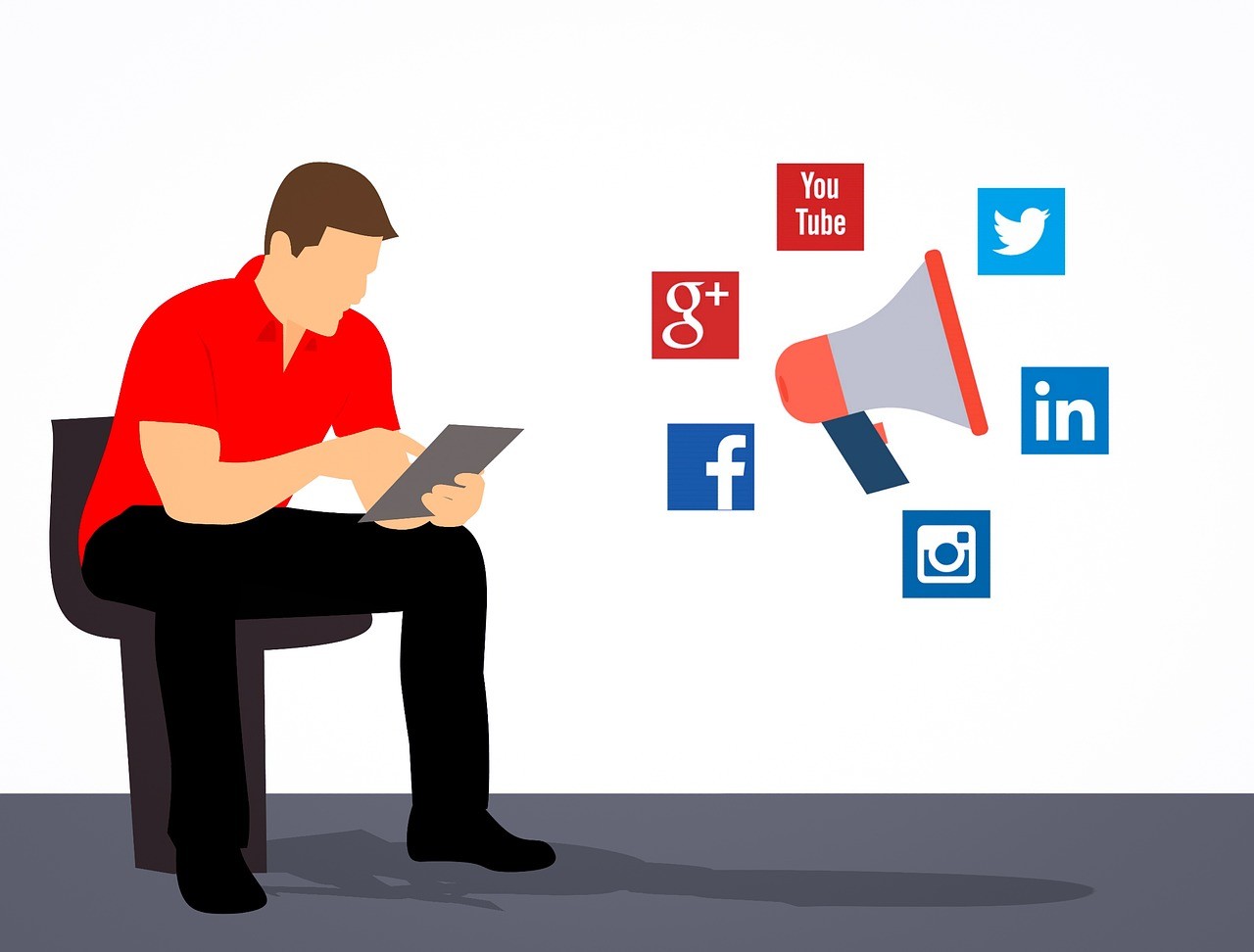
Once sponsors come on board, promote them and thank them on your website and social media. Tag them in social media posts, for example. This can encourage more businesses to get involved.
The IRS has strict rules on how much promotion you can give to sponsors. Genuine sponsorship income isn’t taxable but this changes if it’s deemed to be advertising (and not sponsorship).
This is what the IRS says about the distinction:
“IRC Section 513(i) defines a “qualified sponsorship payment” as any payment made by any person engaged in a trade or business with respect to which there is no arrangement or expectation that such person will receive any substantial return benefit other than the use or acknowledgment of the name or logo (or product lines) of such person’s trade or business in connection with the activities of the organization that receives such payment.
Such use or acknowledgment does not include advertising such a person’s products or services (including messages containing qualitative or comparative language, price information, or other indications of savings or value, an endorsement, or an inducement to purchase, sell, or use such products or services).”
So, what does this mean for your event sponsorships?
You shouldn’t actively promote the products or services that your sponsors sell or try to encourage your audience to become their customers.
It’s fine to acknowledge your sponsors and let people know they’re supporting your nonprofit. Beyond that, it’s more of a gray area.
You won’t get into trouble if you’re deemed to be accepting advertising payments but the income can be taxable.
Pro tip: IRS restrictions can make it challenging to secure high-level sponsorship packages but you can still do this by taking a strategic approach. This involves setting up long-term partnerships with businesses.
Bonus Tip: Thanking Sponsors

At the end of a fundraising event, you can call sponsors onto the stage to say thank you or read out a list of their names.
Depending on the sponsorship packages you’re offering, you could give top billing to a select few sponsors and list the others.
After the event, publicly thank your sponsors for helping make it possible. Thank you notes or cards are a nice way to do this. Task some of your volunteers to write and send thank you messages in the days after the event.
Pro tip: Highlight the real-world impact that your fundraising event will have and the role that your sponsors have played in it. Let them know what you were able to do as a result of their involvement. If sponsors can see they’re making a difference to your work, they’re more likely to buy a package next year.
Thank your sponsors on social media too. Upload photos from your fundraising event, including ones with sponsor signage.
Pro tip: If VIP tickets aren’t part of your sponsorship packages, you can give free passes to some sponsors as a thank you.
Over to You
Getting sponsorship for fundraising events helps your nonprofit cover the costs of hosting them. It can also enable you to build long-term partnerships with businesses.
Securing sponsorships can be daunting but with a clear plan and plenty of persistence, it’s not as challenging as you might think.
Just make sure you don’t cross over the fine line between sponsorship and advertising, or you could be taxed on some of the funds raised.
Here at Donorbox, we’re committed to helping your nonprofit grow. Whether that’s through our fundraising and donor management software or sharing resources on our nonprofit blog, we’re here to help you make the most of your time and resources.
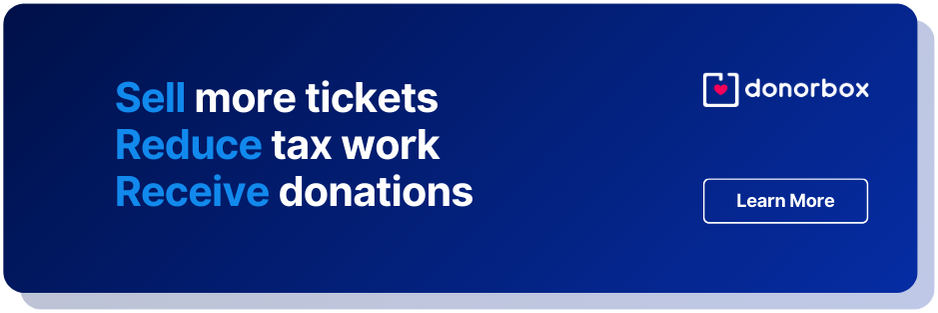
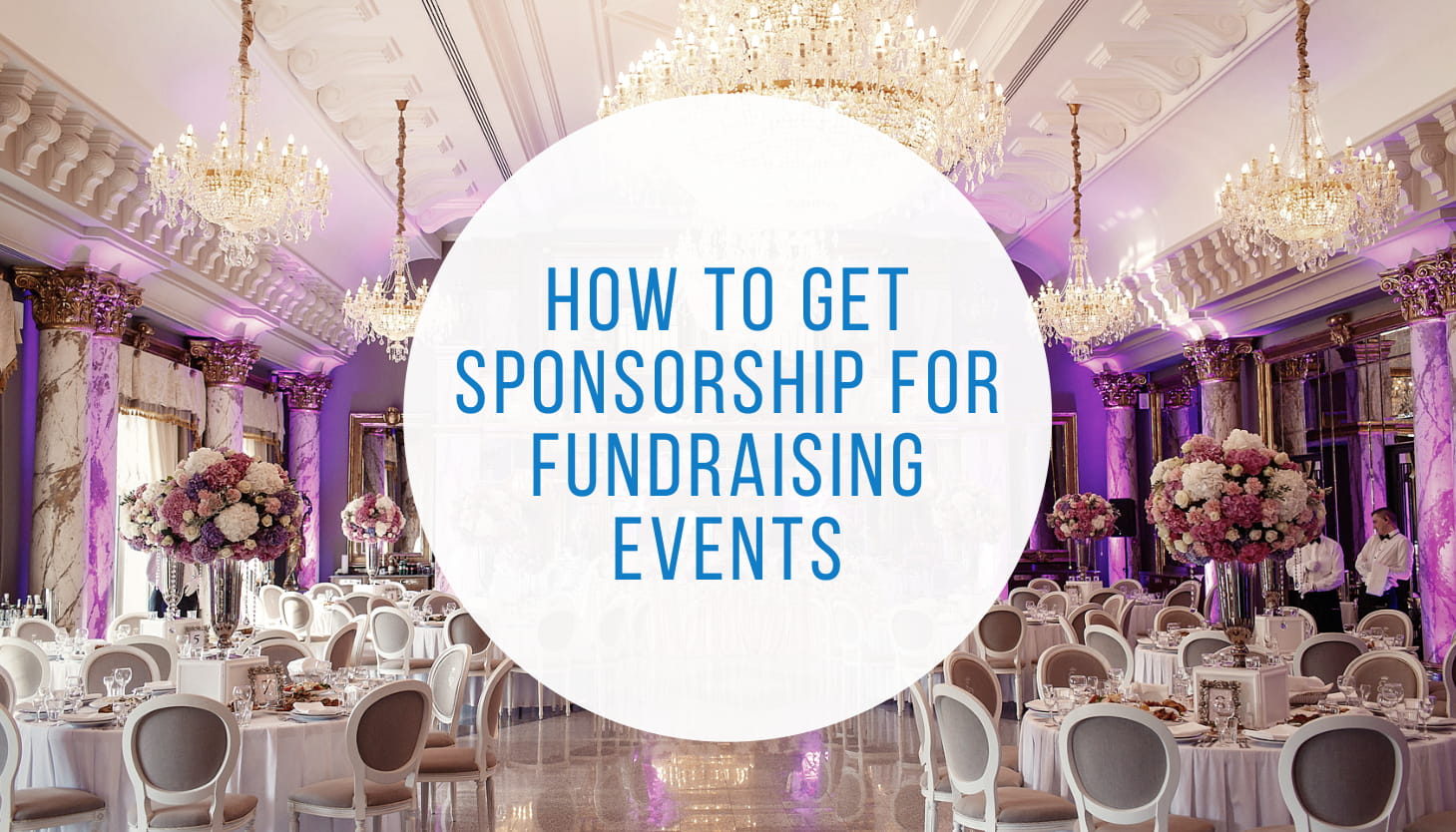
 Sponsorship involves making payments or offering in-kind support to your organization — usually in exchange for low-cost promotion for the company. Their name and branding is in front of attendees.
Sponsorship involves making payments or offering in-kind support to your organization — usually in exchange for low-cost promotion for the company. Their name and branding is in front of attendees.







